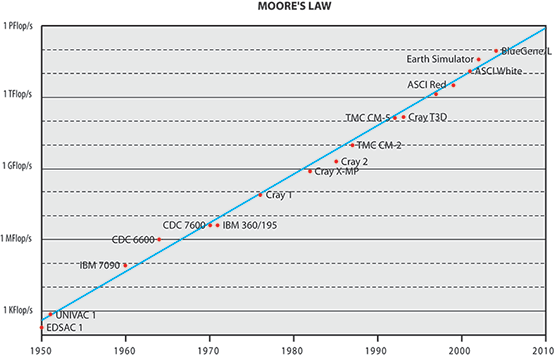"The Only Thing Constant Is Change" -- Looking back on the last four decades this seems certainly to be true for the market of High-Performance Computing systems (HPC). This market was always characterized by a rapid change of vendors, architectures, technologies and the usage of systems.1 Despite all these changes the evolution of performance on a large scale however seems to be a very steady and continuous process. Moore's Law is often cited in this context. If we plot the peak performance of various computers of the last six decades in Fig. 1, which could have been called the 'supercomputers' of their time,2,3 we indeed see how well this law holds for almost the complete lifespan of modern computing. On average we see an increase in performance of two magnitudes of order every decade.







